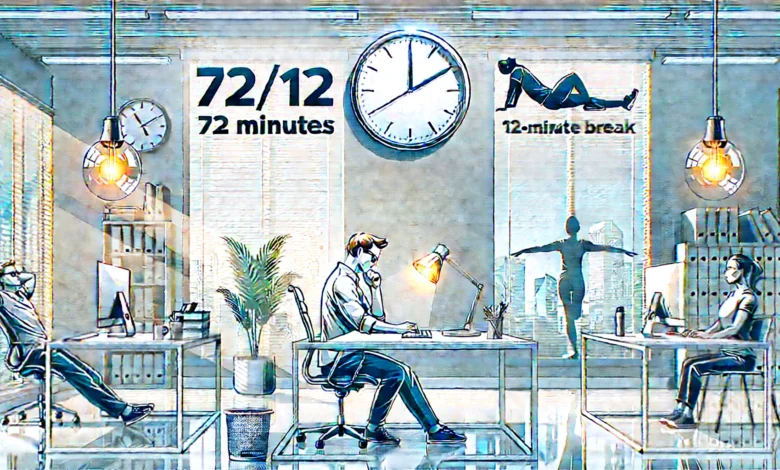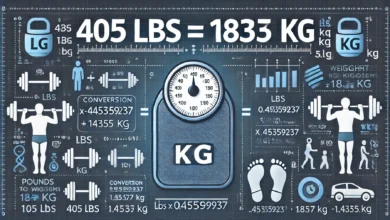Understanding 72/12: A Practical Framework for Success

The term 72/12 might sound like a numerical puzzle at first glance. However, it holds practical value across multiple domains such as productivity, work-life balance, and goal achievement. Whether you’re a student, entrepreneur, or working professional, understanding and applying the 72/12 principle can transform how you manage time, tasks, and energy.
What Is 72/12?
72/12 is a time management and productivity framework where you focus intensely for 72 minutes, followed by a 12-minute break. It’s based on the principle that sustained attention, when broken up by strategic rest periods, enhances performance and reduces burnout.
Origins of the 72/12 Rule
This concept draws inspiration from similar productivity cycles such as the Pomodoro Technique (25/5) and the 90-minute ultradian rhythm. The idea behind 72/12 is to push cognitive boundaries slightly longer than usual before rewarding the brain with rest. It’s rooted in neuroscience and behavioral psychology.
Why 72 Minutes?
Research suggests that the human brain can focus on a task for around 70–90 minutes before mental fatigue begins to impair performance. A 72-minute block strikes a balance between deep work and mental stamina, making it a sweet spot for complex tasks.
The Role of the 12-Minute Break
Just as important as the 72 minutes of focus, the 12-minute break serves to:
- Recharge mental energy
- Prevent eye strain
- Improve long-term concentration
- Boost creativity during the next focus cycle
During this break, it’s ideal to engage in light physical activity, mindfulness, or simply disconnect from screens.
How to Implement the 72/12 Cycle
Here’s a practical way to incorporate it into your daily routine:
- Plan your tasks for a 72-minute session.
- Use a timer to stay on track.
- Eliminate all distractions before starting.
- After 72 minutes, pause for 12 minutes.
- Repeat for up to 3 cycles per workday.
Benefits of the 72/12 Rule
Applying the 72/12 cycle offers several advantages:
| Benefit | Description |
|---|---|
| Enhanced Productivity | Maximizes output in shorter timeframes |
| Mental Clarity | Avoids decision fatigue and maintains sharp focus |
| Better Time Management | Encourages structured work periods |
| Stress Reduction | Prevents burnout through scheduled recovery |
Who Should Use the 72/12 Approach?
This technique is especially useful for:
- Writers and creatives
- Developers and programmers
- Students preparing for exams
- Professionals working on complex projects
Basically, anyone with tasks requiring extended focus can benefit.
Comparing 72/12 with Other Time Techniques
| Technique | Focus Time | Break Time | Best For |
|---|---|---|---|
| Pomodoro | 25 mins | 5 mins | Quick tasks and early focusers |
| 90/20 | 90 mins | 20 mins | Long deep work sessions |
| 72/12 | 72 mins | 12 mins | Balanced deep work and rest |
Unlike others, 72/12 provides a middle ground—long enough for deep work but short enough to avoid exhaustion.
Common Challenges and Solutions
Challenge: Difficulty in maintaining focus
Solution: Use apps like Focus Keeper or Brain.fm to support sustained concentration
Challenge: Taking breaks seriously
Solution: Set alarms and physically step away from your desk
Challenge: Task mismanagement
Solution: Prioritize your top 3 tasks before starting the cycle
Science Behind 72/12
Cognitive science supports working in cycles. Studies have found that regular breaks lead to better memory retention and decreased mental fatigue. Moreover, when the brain knows a break is coming, it tends to work harder and smarter during focus periods.
Success Stories Using 72/12
Many professionals report improved focus and satisfaction. For instance, a freelance writer completed a book draft 30% faster using the 72/12 method. Similarly, a software engineer reduced task backlog by applying this strategy for just two weeks.
Tips to Get Started
- Start with one 72/12 cycle per day
- Gradually build up to 2 or 3
- Customize the time based on your energy patterns
- Track your progress weekly to adjust
Tools to Support 72/12
| Tool Name | Function |
|---|---|
| Toggl | Time tracking |
| Brain.fm | Focus-enhancing audio |
| Notion | Task management |
| Forest App | Avoid phone distractions |
These apps enhance the effectiveness of the 72/12 structure.
Incorporating 72/12 into Teams
If you’re a manager, introducing this cycle in team settings can:
- Improve meeting efficiency
- Boost collaborative productivity
- Increase morale with structured breaks
FAQs about 72/12
Q1. What does 72/12 mean?
It refers to a productivity technique where you focus for 72 minutes and then take a 12-minute break.
Q2. Is 72/12 better than Pomodoro?
For tasks requiring deeper concentration, 72/12 offers longer uninterrupted work time, which can be more effective.
Q3. Can students use 72/12?
Absolutely. It helps in focused study sessions, especially for subjects requiring deep understanding.
Q4. How many 72/12 cycles should I do in a day?
Start with one or two. Increase as your stamina improves.
Q5. What should I do during the 12-minute break?
Stretch, take a walk, hydrate, or meditate—anything non-digital and refreshing.
Q6. Is there scientific proof for this method?
Yes. Studies on cognitive performance and ultradian rhythms support the idea of timed focus and rest periods.
Conclusion: Is 72/12 Worth It?
The 72/12 rule offers a compelling way to maximize productivity without compromising mental well-being. It fits modern demands by balancing focus and rest. Whether you’re tackling a big project or managing a team, implementing this technique can lead to real results.




